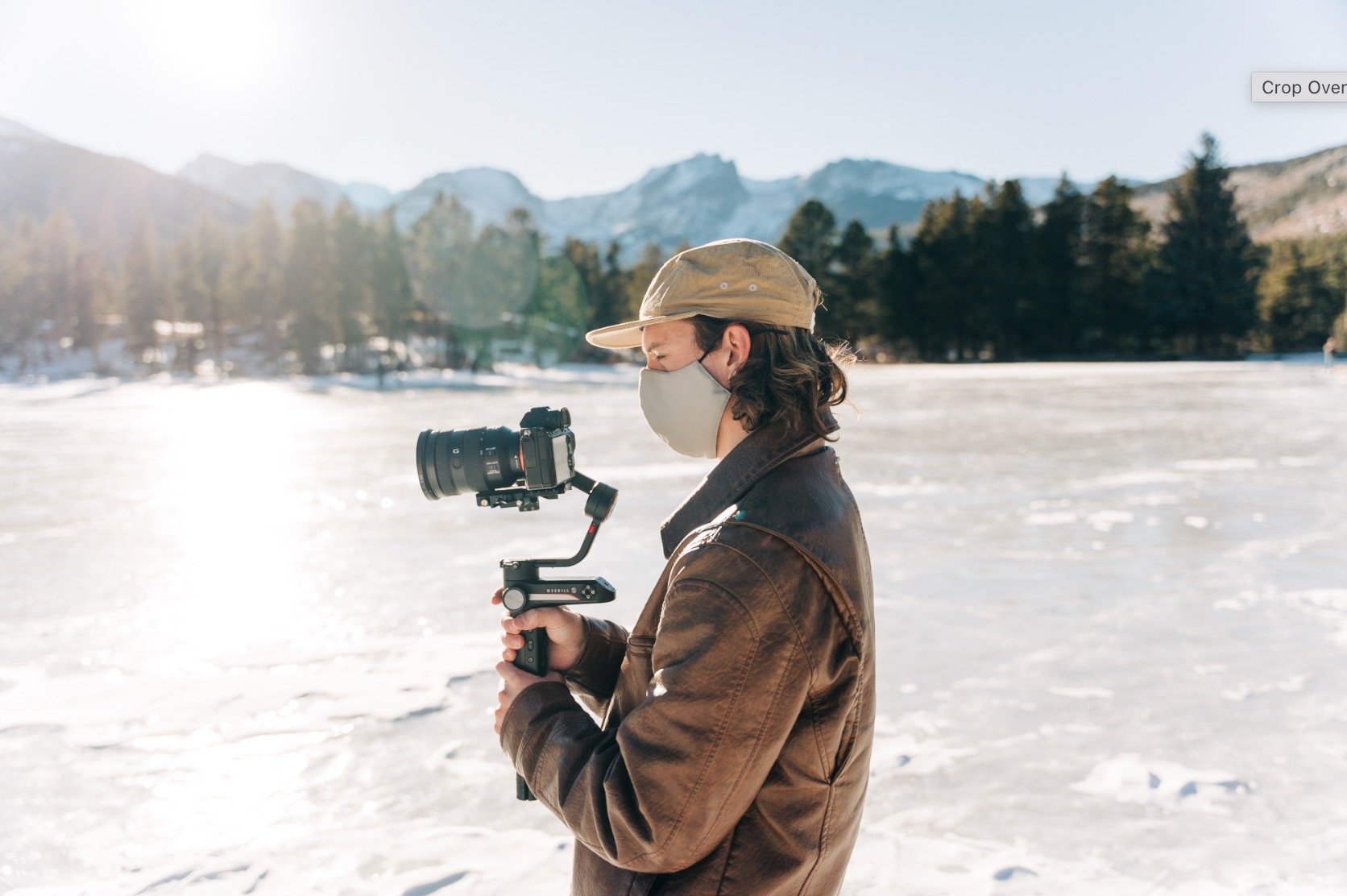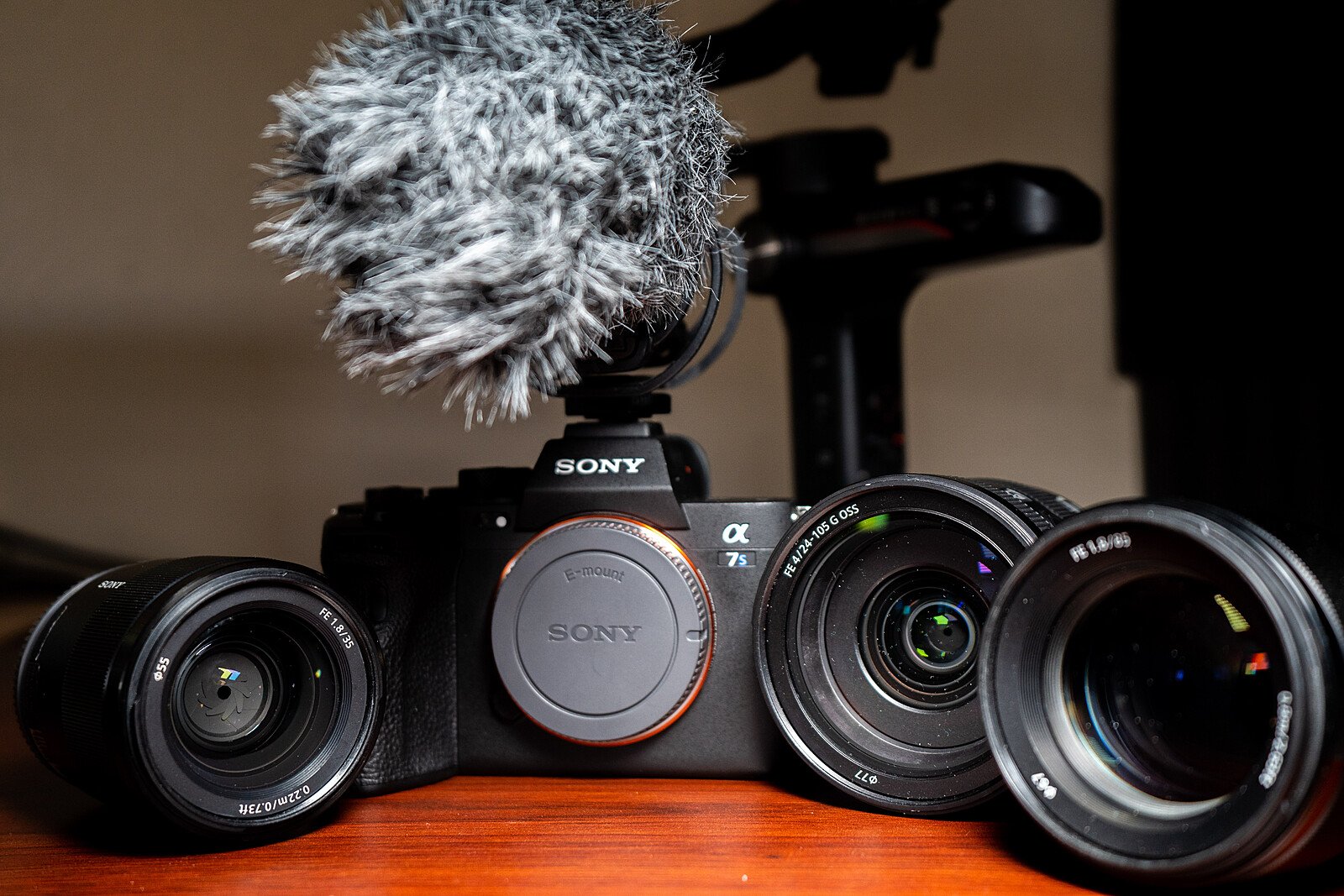Gear Talk - What Cameras I Use and Why
I have lot of the blog posts about my work as a director and cinematographer but I rarely talk about cameras so here’s an inside look into what cameras I use and why I love them.
Main Camera Body - Sony A7siii
This camera has revolutionized my work as a documentary filmmaker since the image quality that comes out of such a small and robust package is mind blowing. I won’t get too technical but there are a number of features I find have really helped assist in leveling up my storytelling opportunities.
Super Capable in All Environments
One of the most important aspects of this camera is what’s referred to as a “dual native ISO” which essentially means it has two different (dual) ISO values the produce little to no noise in the image (native ISO). In simple terms, this camera can produce a great image in really bright conditions (i.e. a snowy mountain in sunny Colorado) or really dark conditions (I.e. underwater or at a campfire). Since the majority of my work comes from creating branded documentaries, I’m rarely able to carry lots of lights into the backcountry since I need to move quickly and stay light to keep up with various athletes.
Customizing the camera to fit my style of filmmaking
Although the image quality is the most recognizable feature in a camera there are a number of smaller characteristics that I love. When I shoot, I often have my settings preloaded onto dials and buttons on my camera so I don’t have to worry about changing anything when I’m filming rock climbing, flying down the mountain on skis or trail running with the camera.
The button customization, great color science and color manipulation capabilities and autofocus mean I can get a really great shot in lots of varied environments. That being said, the camera is definitely just a tool and without creativity or a well thought out story arc you won’t be creating what you want.
Check out the Goat Surf Club series to see photos and videos that I took using the Sony A7siii
Secondary / Stills Camera Body - Sony A7iii
This was my first “mirrorless” camera and still comes with me on a lot of projects. It doesn’t have as many fancy video features as the Sony A7siii but it still thrives in well-lit scenarios. For that reason, I often use it as a b-cam for a lot of my interview setups during documentary projects. For photo specific jobs such as larger brand campaigns or lifestyle photo shoots, this is the camera I use since it has a higher megapixel count than my other camera.
However, for projects in which I do both photo and video together I’ll just shoot everything on the A7siii since I don’t like carrying two camera bodies if I don’t have to.
Check out my documentary “The Mountain Guide” to see some photos and videos that came solely from the A7iii.
Drone - Mavic Air 2s
This drone is an absolute beast and is so useful given its price point. The color science and color editing potential is phenomenal, the flight time is fantastic and, most importantly, it’s super small. A recurring theme you may see in the gear that I use is the size.
Small, Light and Easy
A smaller drone and camera means I can carry it further and pack it tighter making it a great piece of gear for longer shoot days in the mountains. This drone shoots in 5.4k resolution as well which means I have the option to crop slightly and still deliver a high quality 4k video to my clients.
I took this drone on a shoot in Utah to film longtime friend and rock climbing YouTuber Noah Kane climb an iconic tower in the desert.
Lenses
When I’m outside filming a documentary series or adventure style documentary, I’m typically using the Sony 24-105mm f/4 for about 95% of the film. The image quality is awesome, it’s optically stabilized so makes things look even more stable and allows me to avoid carrying a tripod or gimbal to many hard to reach places. It allows me to get wide shots, medium and tight shots without having to move which, on some mountaintops and rock faces, is a necessary requirement.
Documentary vs. Commercial
For more scripted and pre-planned commercials and branded documentaries, I’ll shoot most everything on my 35mm f1/.8, 85mm f/1.8 and 14mm f1/.8 since they’re a little sharper and have a shallower depth of field which produced a more “commercial” or “cinematic” look to some people. For documentary, I’m mostly shooting on zooms and commercials I’m always on primes.
Audio Equipment
A large forgotten part of the filmmaking process is the audio gear and I’ve been really happy with my setup which has remained unchanged for about 5 years. There are a few pieces of audio equipment I may rent for larger, bigger budget projects but every documentary you will find on this website will use this equipment…
For lavalier microphones I use the Tascam DR-10l which allows me to attach the microphone to the subject, hit record and simply revisit it in 3 hours to make sure it’s still going. Placing a microphone as close as possible to the source will produce the best audio result and I’ve found that doing this in addition to basically sound treating rooms for interviews often leads to great audio.
By partnering this lav mic with the shotgun mic on my camera (Rode VideoMic Pro+), it usually gets the job done. For bigger commercial projects I’ll either hire a dedicated sound recordist or rent a better mic but I’m mostly doing run and gun style documentary filmmaking so being light, quick and easy is important.
The Cameras I Don’t Use
There are a lot of cameras out there and, at this point, I’ve used a whole lot of them. I’ve operated everything from super high end cinema cameras to GoPros and while the technology is really interesting, it doesn’t always fit well with what I do. For instance, RED cinema cameras have been considered a gold standard of image quality in the outdoor industry but it just doesn’t work well for my directing workflow. The camera takes a while to turn on, something which bugs me in my normal quick reaction style of filmmaking.
It just doesn’t work for me
There’s no autofocus which means I have to take my brain away from thinking about composition and story development to pulling focus, which negatively impacts my ability to both direct and camera operate at the same time. The file sizes and resolution is overkill for how I deliver videos since I mostly create longer documentaries for clients and don’t need the option to give their audiences an 8k resolution option. Plus, I’m convinced most everybody just watches my videos on their phone and non-4k laptop anyways. That being said, when I’m hired directly by a production company as a cinematographer, I do love working with RED cameras just for its insane capabilities.
So when it comes time to create my next bike film, surf documentary or mountain adventure series I’ll just pull out a small backup and chuck all these pieces of gear in there.
If clients want me to shoot on a specific camera, I’m always happy to oblige but I will say that 95% of the work you’ve seen from me has been made from these few pieces of camera gear.
Have a Story Idea? Chat with Me!
Roo is a commercial/documentary filmmaker and photographer based in Boulder, Colorado but travels all around the world for his filmmaking career. He has produced films for Outside Magazine in Ireland, camera operated for Netflix in the Rocky Mountain West, photographed among indigenous communities in Peru and Ecuador, directed videos with professional climbers in Mexico and has received notable recognition in his hometown of Orcas Island in Washington State for his work telling uplifting stories in the outdoor space.













